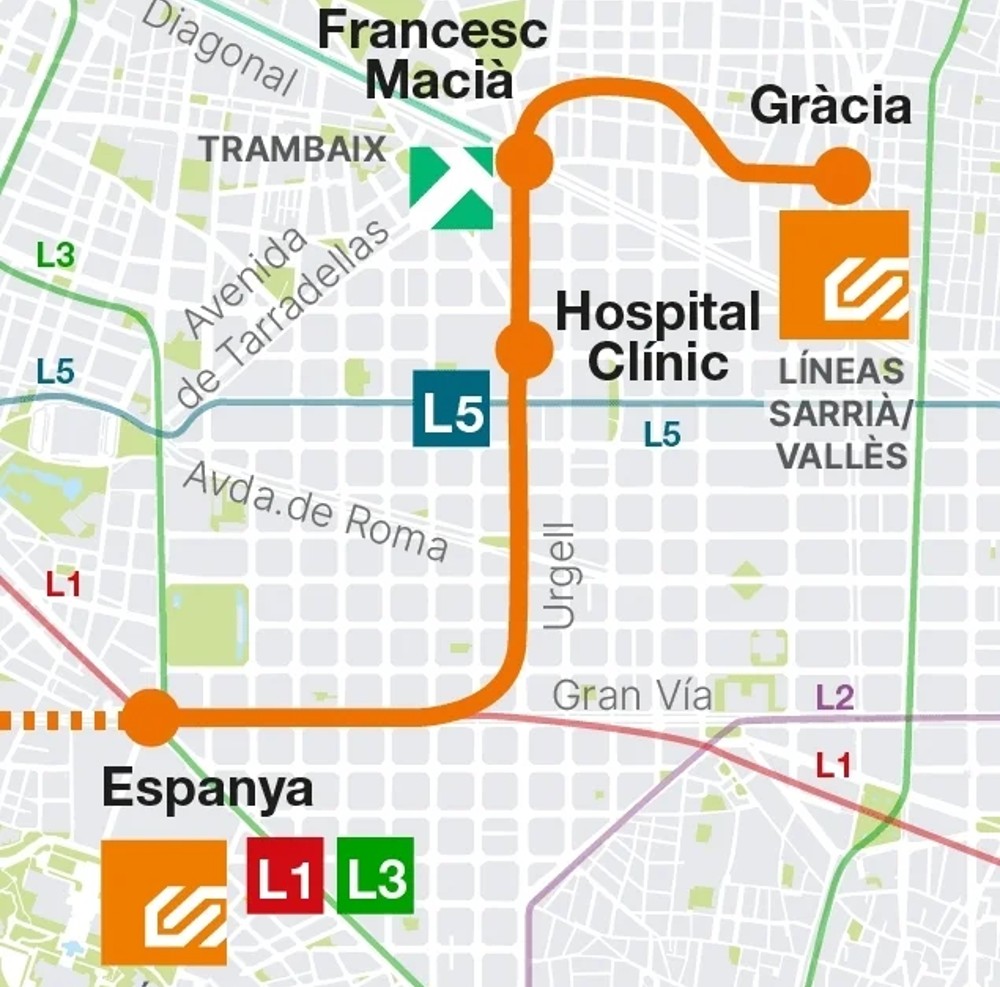The new L8 of Ferrocarrils de la Generalitat de Catalunya, FGC, will connect the points Plaza España and Gràcia by 2030.
The line will be extended with three new stations that will connect these two key points on the Barcelona map.
Historically, it has been one of the most requested connections. Mainly because of the need to extend the railroad tunnel from Plaza España to the interior of the capital.
In this way, it will be possible to connect to Barcelona through its upper area without having to go down to the center.
The investment for the L8 works will be around 430 million euros. This budget will be used to extend the Plaza España railroad tunnel and build three new stops:
- Hospital Clínic
- Francesc Macià
- Gràcia
This will complete the connection between L8 (Llobegat-Anoia) and the Vallés line.
The work, which has been planned for some two decades, will begin in the summer of 2023.
However, the tunnel extension works, as well as the remodeling of Plaza España and Gràcia stations and the construction of the new stations, will not be completed until 2030.
A key connection point
The Generalitat recently put out to public tender the works for the connection of the Llobregat and Vallès lines of Ferrocarrils de la Generalitat.
The construction works include the new tunnel of about four kilometers at a cost of approximately 320 million euros.
The stations and associated facilities are also added, resulting in a total cost of 430 million euros between all the works. In fact, it is one of the infrastructure investments in Catalonia with the highest social return.
The first phase of the works is expected to be awarded in the spring of 2023, with work to begin in the summer and last about six years.
The new L8 will come into operation in 2030
The entry into service of the new section will only be until 2030. The start-up deadlines have been lengthening over time and the budget has been increasing with respect to the initial estimates. All due to the high technical complexity involved in drilling the Eixample.
In fact, the tunnel boring machine, which is about ten meters in diameter, will be smaller compared to the one that will cross the upper part of Barcelona, which completes the central section of Line 9.
The TBM will have the challenge of overcoming roads and a pluvial reservoir until it reaches a depth of 52 meters. And this deepest point is under Urgell street at the height of the Hospital Clínic. It is something like the size of a building with more than 15 floors.

